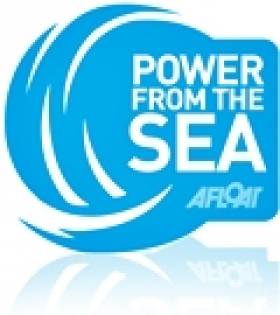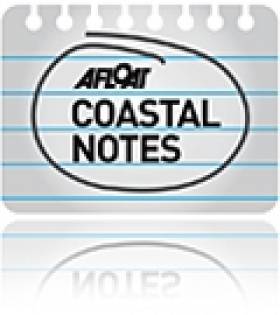Displaying items by tag: tidal energy
New Machines Changing the Rules for Wave Power
New Scientist has highlighted some of the latest technologies being developed to harness power from the sea.
Companies such as Pelamis Wave Power and Aquamarine Power are already testing prototypes of their so-called wave energy 'harvesters' - enormous machines that can capture the massive potential energy stored within ocean waves.
Pelamis' huge P2 is filled with state-of-the-art computers that allow programmers to control and update its operations on the fly, quickly taking advantage of changes in sea conditions to maximise energy production and increase efficiency.
The proof is in the pudding, as P2 can produce 750 kilowatts of power - twice as much as earlier prototypes.
Aquamarine's Oyster 800, meanwhile, can generate an incredible 800 kilowatts by way of a giant hinged flap that juts out of the water. Each passing wave closes the flap shut like a clamshell, with the resultant hydraulic pressure driving an onshore turbine.
"If you can get that sort of level of performance improvement then the economics suddenly start to look a lot more favourable," says The Carbon Trust's Stephen Wyatt.
New Scientist has more on the story HERE.
Ireland Risks Missing Out On Renewable Energy Benefits
Ireland must do more to develop its port and shipping services or risk missing out on the benefits of the growning renewable energy sector.
That was the message from a new analysis compiled by the Sustainable Energy Authority of Ireland and the Irish Maritime Development Office, as reported by Renewable Energy Magazine.
The current lack of supply services and equipment for renewables in Irish ports could threaten the country's promise in the fields of offshore wind, tidal and wave energy, the report states.
It is estimated that the total value of such renewable energy sectors could be as much as €16 billion.
The east coast has been identified as the best location for offshore wind and tidal projects, while the south and west coasts were best for wave power and wind farms.
“We now need to look at the investment in infrastructure required if we are to properly capitalise on the current opportunities in this area," said the report.
Renewable Energy Magazine has more on the story HERE.
New Mammal Detection Sonar System for Sea Turbines
The latest product from sonar technology company Tritech is a mammal detection system for use around underwater turbines.
According to the manufacturers, the Gemini SeaTec system uses a multi-beam sonar and image detection software to provide real-time monitoring and warning of sea mammals in the vicinity of subsea turbines, allowing operators to take corrective action.
The system also logs valuable data that may be used for environmental assessment in any sea turbine development project.
Tritech's system is already installed on the SeaGen tidal turbine in Strangford Lough in Northern Ireland. The system also has future possible applications in cable lay survey operations and general subsea monitoring.
For more details visit the Tritech website.
'Underwater Kite' a Clean Energy Solution
An 'underwater kite' developed by a Swedish company could be a simple answer to harnessing the power of the sea, The Local reports.
The Deep Green device looks like a toy kite with a turbine attached. But when tethered to the seabed and carried by the ocean currents, it can harness energy at a much more efficient rate - 800 times greater - than surface-based turbines.
Minesto, the company behind the project, claims it can generate 500 kilowatts of power even in calm conditions.
A scale model of the Deep Green system, which was included in Time Magazine's 50 Best Inventions of 2010, will be unveiled later this year off the coast of Northern Ireland.
It will provide an opportunity for testing in real ocean conditions, as well as evaluating the potential impact on marine life below the surface.
“We are confident once successful trials have been carried out for it to be commercially operative by 2013,” said Minesto CEO Anders Jansson.
Sweden's The Local has more on the story HERE.
Renewable Energy Firms Plan Tidal Array in Wales
Two renewable energy companies have applied for planning permission to install a tidal turbine array off the Welsh coast.
Energy Efficiency News reports that the 10MW array commissioned by RWE npower renewables would consist of seven SeaGen turbines from UK-based Marine Current Turbines (MCT), enough to generate energy for 10,000 homes.
The windmill-like turbines would be installed 1km off Anglesey in north Wales between Skerries and Carmel Head and be operational by 2015.
SeaGen turbines are already operating in Northern Ireland's Strangford Narrows, an installation accredited by Ofgen as Britain's first tital power plant. MCT is also working with ESB International on a 100MW project off the Antrim coast.
The Welsh Assembly has set a target of capturing 10% of tidal and wave energy off the Welsh coast by 2025 as part of its renewable energy plan.
Energy Efficiency News has more on the story HERE.
Scotland To Host World's Biggest Tidal Power Array
Scotland's west coast will be home to the world's largest tidal power facility, it has been announced.
The £40 million (€45.9 million) 10MW tidal array, to be developed by ScottishPower Renewables in the Sound of Islay, will generate power for more than 5,000 homes.
Scottish Cabinet Secretary for Finance John Swinney, who signed off on the deal, described the project as "a milestone in the global development of tidal energy".
"Scotland's seas have unrivalled potential to generate green energy, create new, low carbon jobs, and bring billions of pounds of investment to Scotland," he said.
The project comes in tandem with the consultation process for the Scottish government's National Marine Plan, intended to highlight the best opportunities for investment across all marine industries.
Energy & Environmental Management has more on the story HERE.
Renewable Energy 'Milestone' for Northern Ireland
The UK's Crown Estate has announced a consultation on making areas of Northern Ireland's sea bed available for renewable energy projects, Business & Leadership reports.
The consultation process will inflence leasing rounds for offshore wind and tidal energy projects in September this year, with the potential for development rights to be awarded as early as spring 2012.
Junior Minister Robin Newton commented at yesterday's launch event in Belfast: “Today marks a major milestone in the development of marine renewable energy in Northern Ireland waters."
Energy Minister Arlene Foster added that Belfast harbour "is well placed to become a major offshore logistics centre in the rapidly expanding offshore wind sector".
Business & Leadership has more on the story HERE.






























































